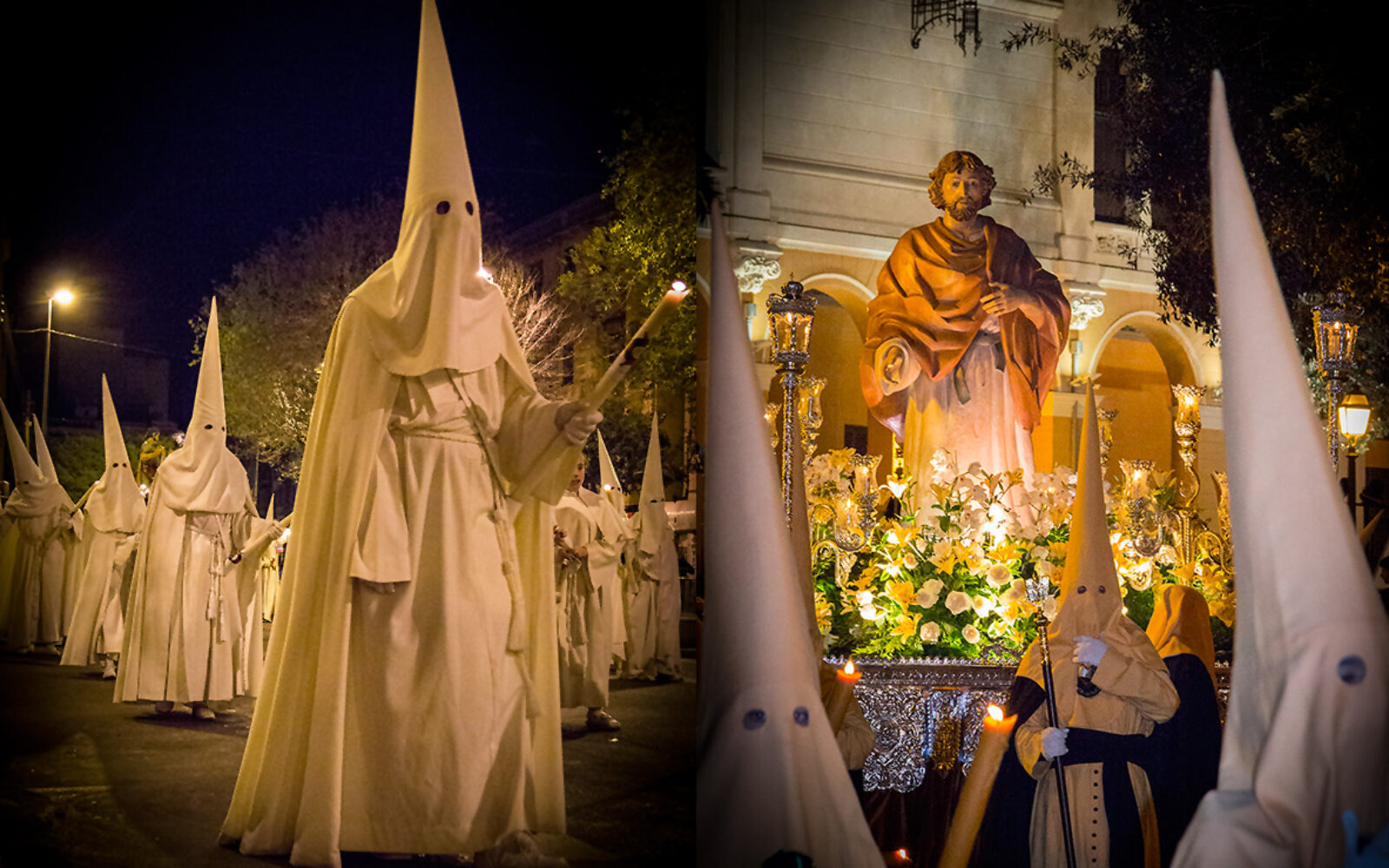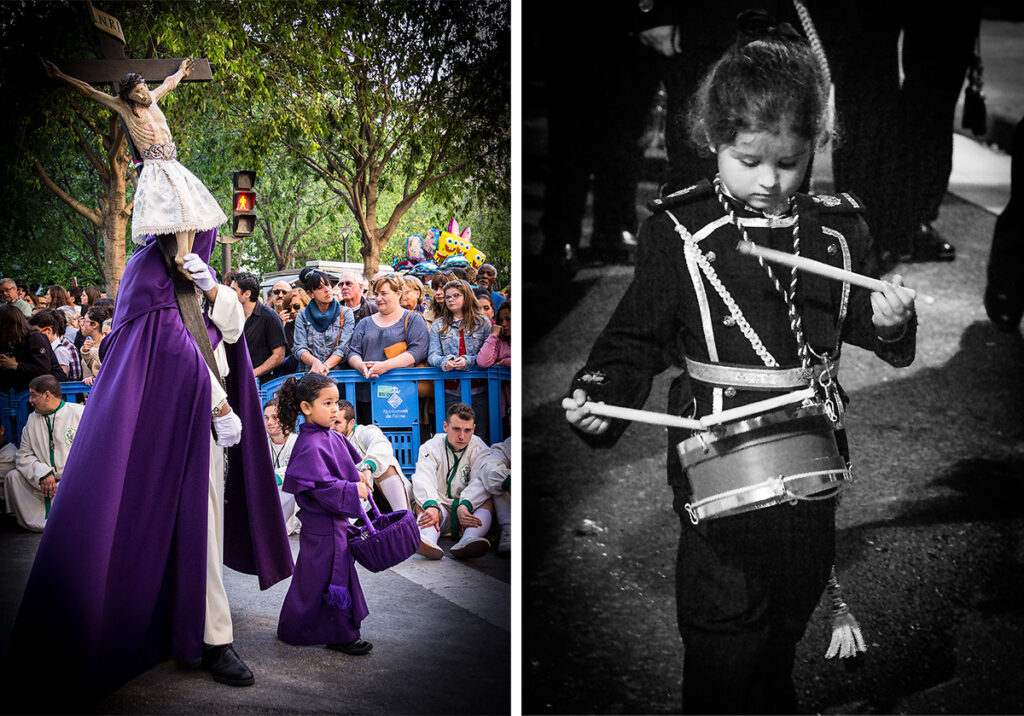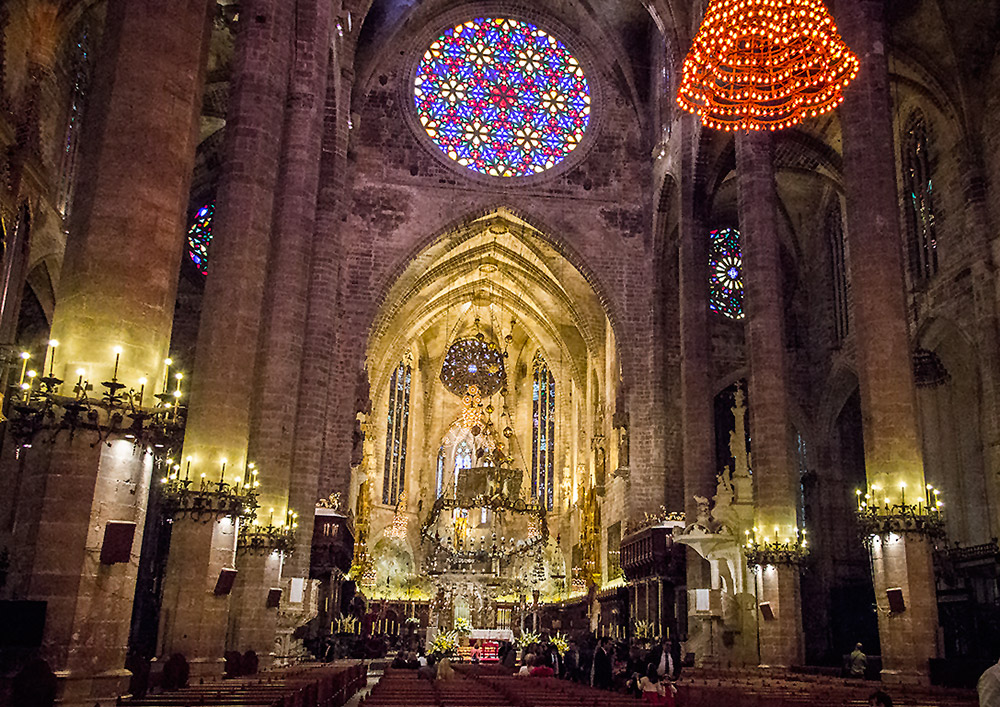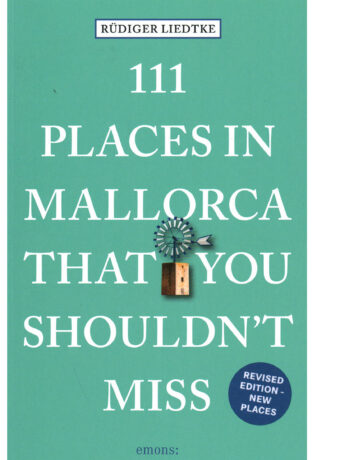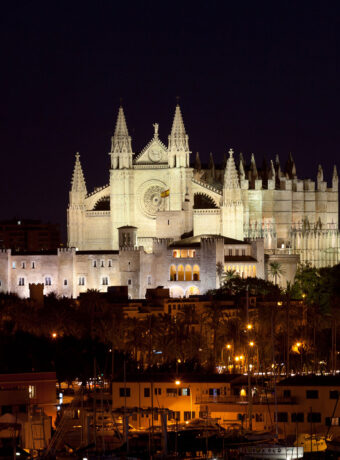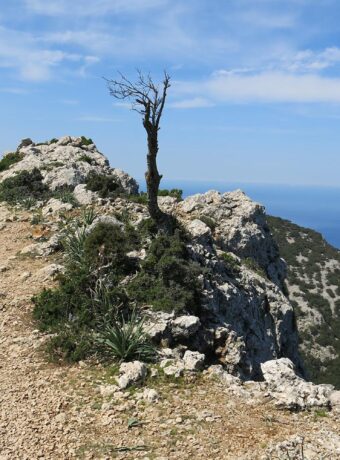In Mallorca’s largest city, Palma, Easter is celebrated with processions throughout the city, masses in the famous La Seu cathedral and a theatre performance about the death and resurrection of Jesus.
A strong scent of lilies mixed with incense spreads to the sound of drums and horns as a giant flower-adorned platform (tronos), adorned with a Jesus figure is carried down the hill by the church, Església de L’Anunciació, in Palma. In front of the platform walks an orchestra followed by a group of people, wearing capriotes and long robes, with torches in their hands. After them, more flocks of hooded people and platforms with religious figures parade by.
It’s Maundy Thursday and La Semana Santa’s (Holy Week) biggest Easter processions have kicked off. Locals, tourists and media alike turned out in force to watch the event, which starts at 7pm and finishes at La Seu Cathedral after midnight.
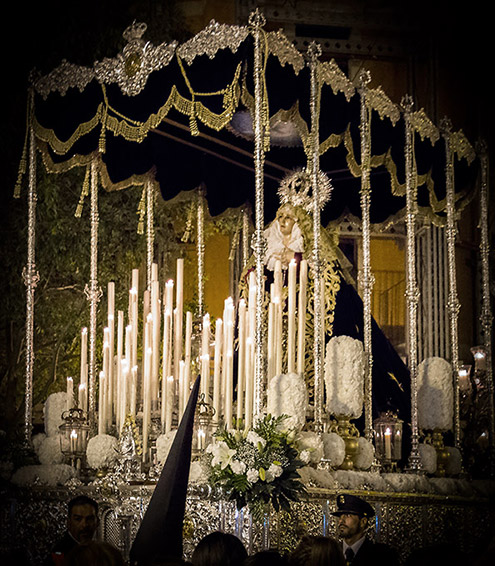
Mixing religion and celebration
Easter is Spain’s most important holiday and, as in the rest of the country’s major cities, it is celebrated in Palma with pompous processions. La Semana Santa lasts from Maundy Thursday to Easter Sunday, but already from Palm Sunday, when the city’s churches are blessed with palm leaves and olive branches, and up to the holidays there are various processions and activities.
The processions move silently and with painfully slow steps through the streets of Palma. Suddenly, a group with a platform stops the whole procession. The porters under one of the platforms move their feet back and forth with tiny, choreographed steps that cause the multi-ton platform to rock back and forth a few times, and then they stand still again and set the platform on the ground. The audience cheers and claps loudly. Some bearers are quickly replaced by others, and after three chimes, the bearers lift the heavy platform again and the procession moves on.
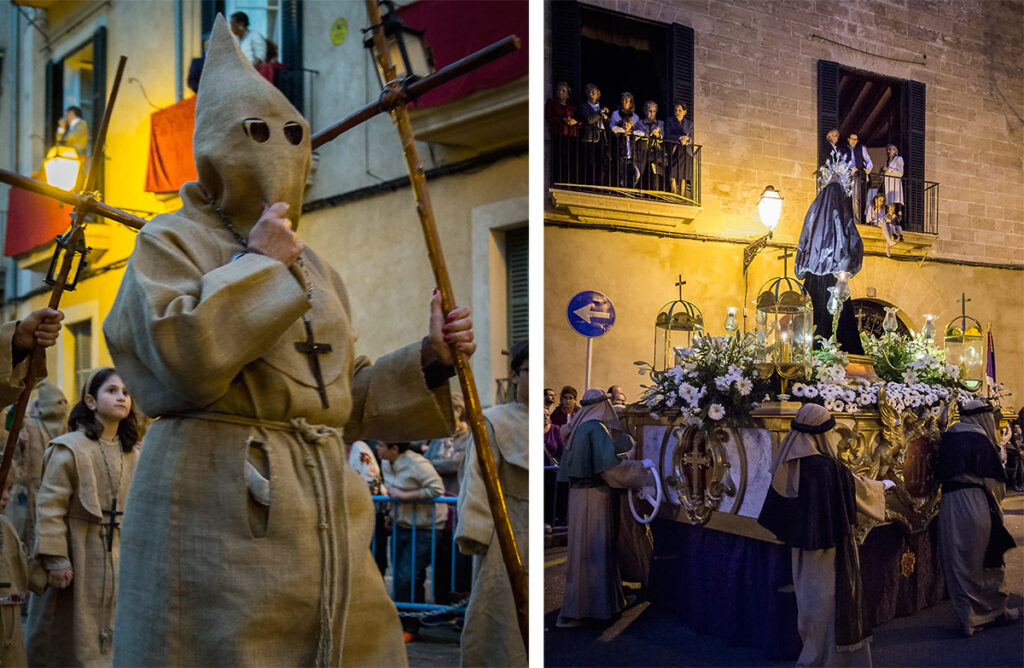
The crowd holds its breath every time the porters have to tow the precious platforms around the tight corners of Palma’s narrow streets. The men carrying the platforms have been practising for months to handle the heavy platforms, but despite practice and good technique, it’s quite a feat.
The Easter processions are traditional penitential processions that pay homage to Jesus Christ and depict different stages of Jesus’ Passion story. The Catholic tradition is hundreds of years old, but has evolved over time from being religious to also being a cultural and social event where you don’t have to be religious to participate.

Sensual señoritas and barefoot men in chains
The processions are planned and organised by the local brotherhoods, whose members perform public penance for the killing of Jesus Christ during Semana Santa. Most fraternities have their own chapel, which they are responsible for maintaining, and they fund the platforms that are carried around the streets during processions.
Some brotherhoods take penance very seriously and walk the streets barefoot with chains around their ankles, wearing robes of scratchy burlap. These brotherhoods typically carry a large wooden cross instead of the flashy platforms. Most participants are dressed in black, white, green, brown or purple robes and caps and wear shoes during the several-hour-long procession. Not everyone wears hoods, including the many beautiful señoritas of all ages, wearing short skirts, black hair decorations with veils and perfect make up.
Children actively participate in the processions
Entire families from the different fraternities take part in the processions, and both young and old children join in removing candles from the torches, as well as carrying small baskets of sweets, which they generously distribute to both children and adults. Some children are also in the orchestras and they keep up with great concentration and commitment until late at night, when the processions end.
Good Friday with theatre performance and several processions
Every year at 12 noon on Good Friday, the steps of La Seu Cathedral are the backdrop for the performance of the drama Vía Crusis (Way of the Cross) by Mallorcan poet and playwright Llorenç Moyà (1916-81).
The Taula Rodona theatre group has really mastered the art of creating intense intimacy with the audience, which is a difficult art when performing in an open landscape. The troupe both grips and provokes some as through the poems they interpret the story of Jesus’ death and resurrection.
The show is financially supported by the city council and has been playing since 1985. Admission is free, but arrive early as it is popular with locals and tourists alike.
In rainy weather, the performance will take place in the Felip Sant Neri Church.

Good Friday sees processions from the Basilica de Sant Francesc at 7pm, which are not as large as those seen on Maundy Thursday. However, the processions still crowd the city’s narrow streets and squares – even the balconies of the city’s houses are packed to bursting with spectators. So, if you’re holidaying in Palma this Easter, you might as well indulge in the folk festivities and soak up the impressions. At the same time, be prepared to move very slowly through the city streets.
The processions end in the church after Jesus, led in procession through the district on his bed in a glass coffin, is safely carried to the church by his entourage.
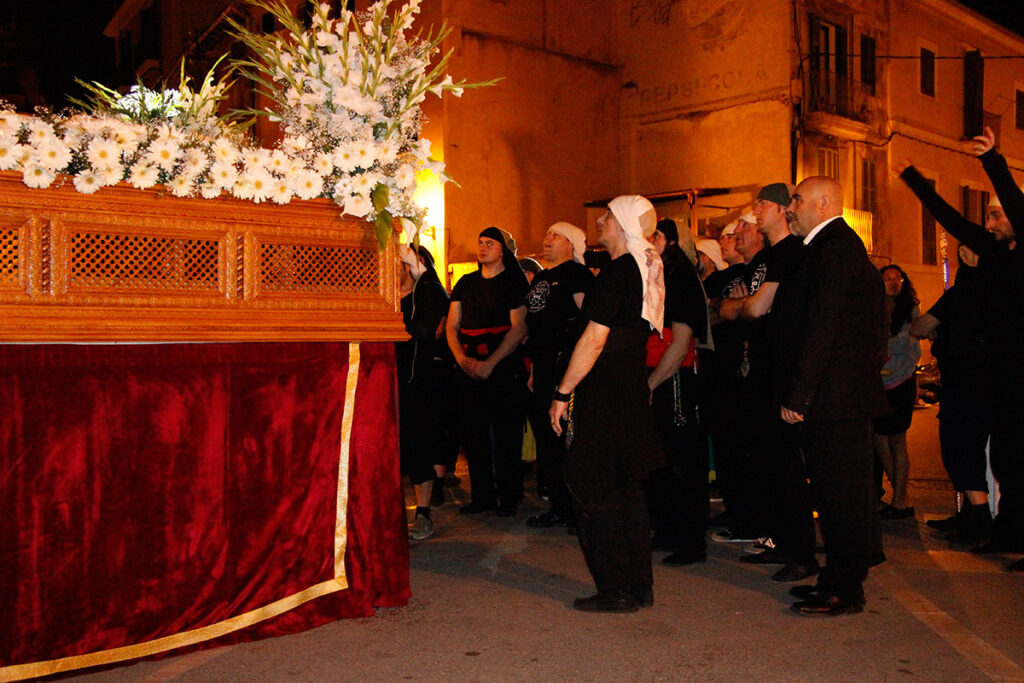
After carrying a platform through the city streets for hours, a group of clearly relieved and proud bearers crawl out from under the platform when the procession has reached its destination. Clearly moved, they say a prayer together at the platform, giving thanks for being allowed to participate and the strength to carry it through. Hearty hugs are exchanged before the tough men can head to the local bar for a well-deserved beer.
Palma rediscovers everyday life for a while
Saturday is just another Saturday in Spain, and Palma is back to its old self. After the many impressions of the previous holidays, it’s liberating to go to the city’s Saturday markets with the locals and spend the afternoon in the sun at a pavement café.
Easter fair and family celebrations
On Easter Sunday, there’s a parade visualising Jesus’ meeting with his mother after the Resurrection and a large Mass with communion in La Seu Cathedral (and most other churches in the city). Easter Sunday is special in La Seu. The heavy mood of Maundy Thursday and Good Friday has turned to lightness, and the beautiful cathedral is festooned with giant, colourful floral displays and lots of candles. Easter Sunday is also a popular day for christenings. When I was at Easter Mass in La Seu, three babies were baptised.
Easter Sunday and Easter Sunday are celebrated by Mallorcans in the bosom of the family with good food. Many go on picnics in the city’s parks and on the beach, and some go out of town to visit the island’s many scenic areas.
Taste Mallorca’s Easter specialties
Just like in Denmark, Spaniards – and Majorcans – also eat well at Easter, and they also have special dishes and specialities that belong to Easter. Taste for example the small meat pies panades with lamb or the sweet robiols with jam and cresspells. They are available at the small bakery Forn de la Soca. You can also see how the specialities are made and decorated with elaborately carved Easter lambs and chickens. In Spain, chocolate Easter eggs are not as widespread as in Denmark, but they are available in a few chocolate shops in Palma and in the department store El Corte Ingles.
Església de L’Anunciació
Plaça de l’Hospital (show on map)
La Seu Cathedral
Plaça de la Seu (show on map)
Basilica de Sant Francesc
Plaça de Sant Francesc 7 (show on map)
El Fornet de la Soca
Carrer de la Llotgeta 8 ( show on map)
